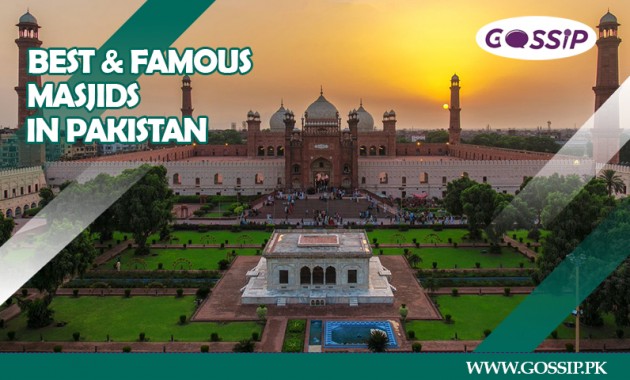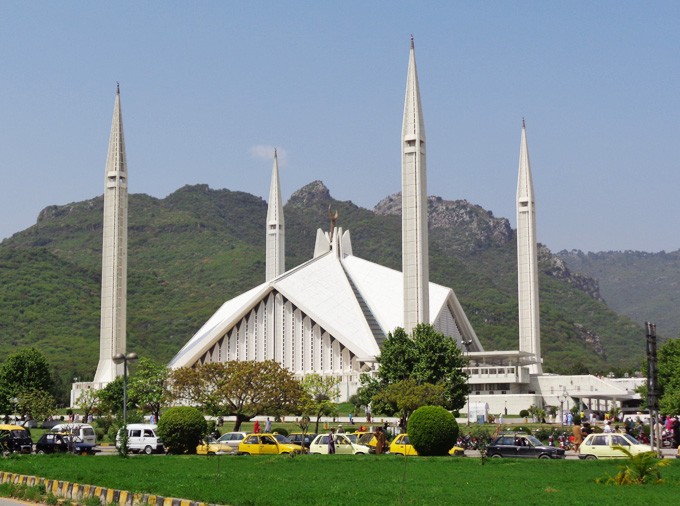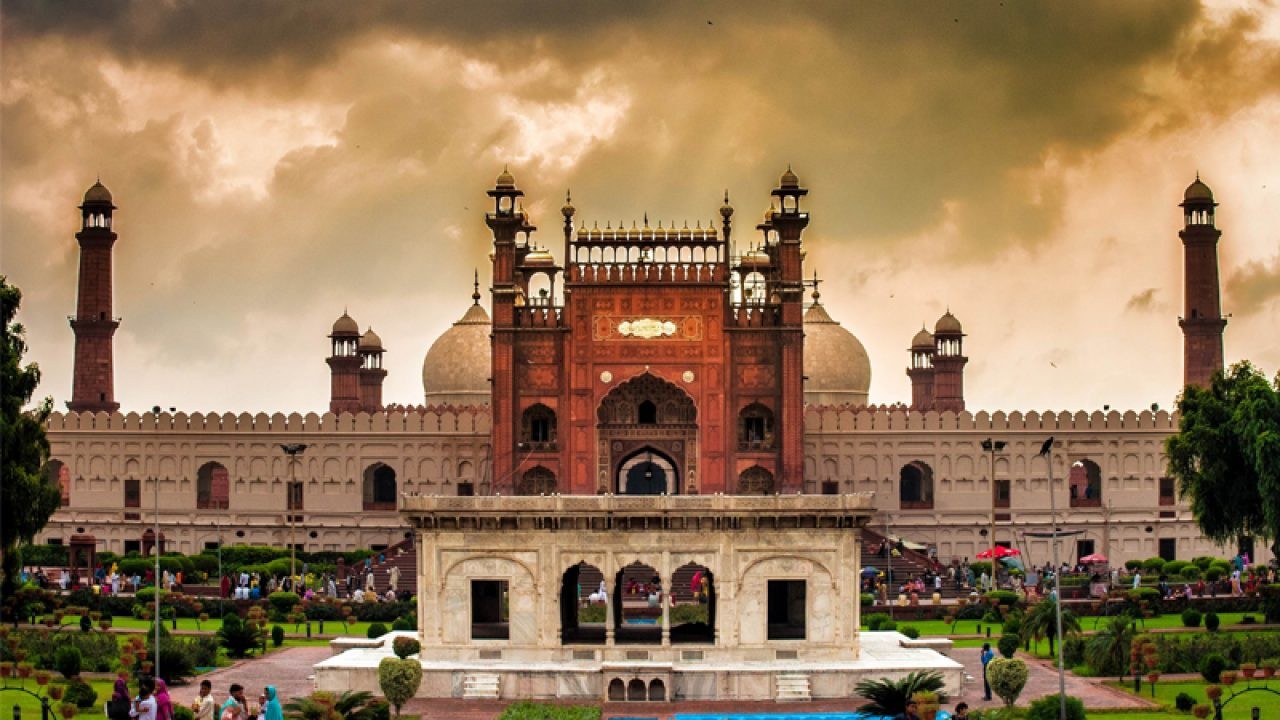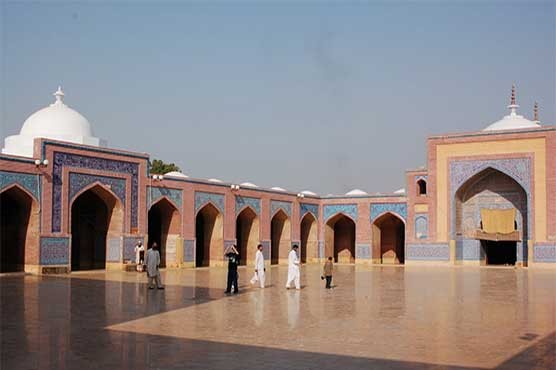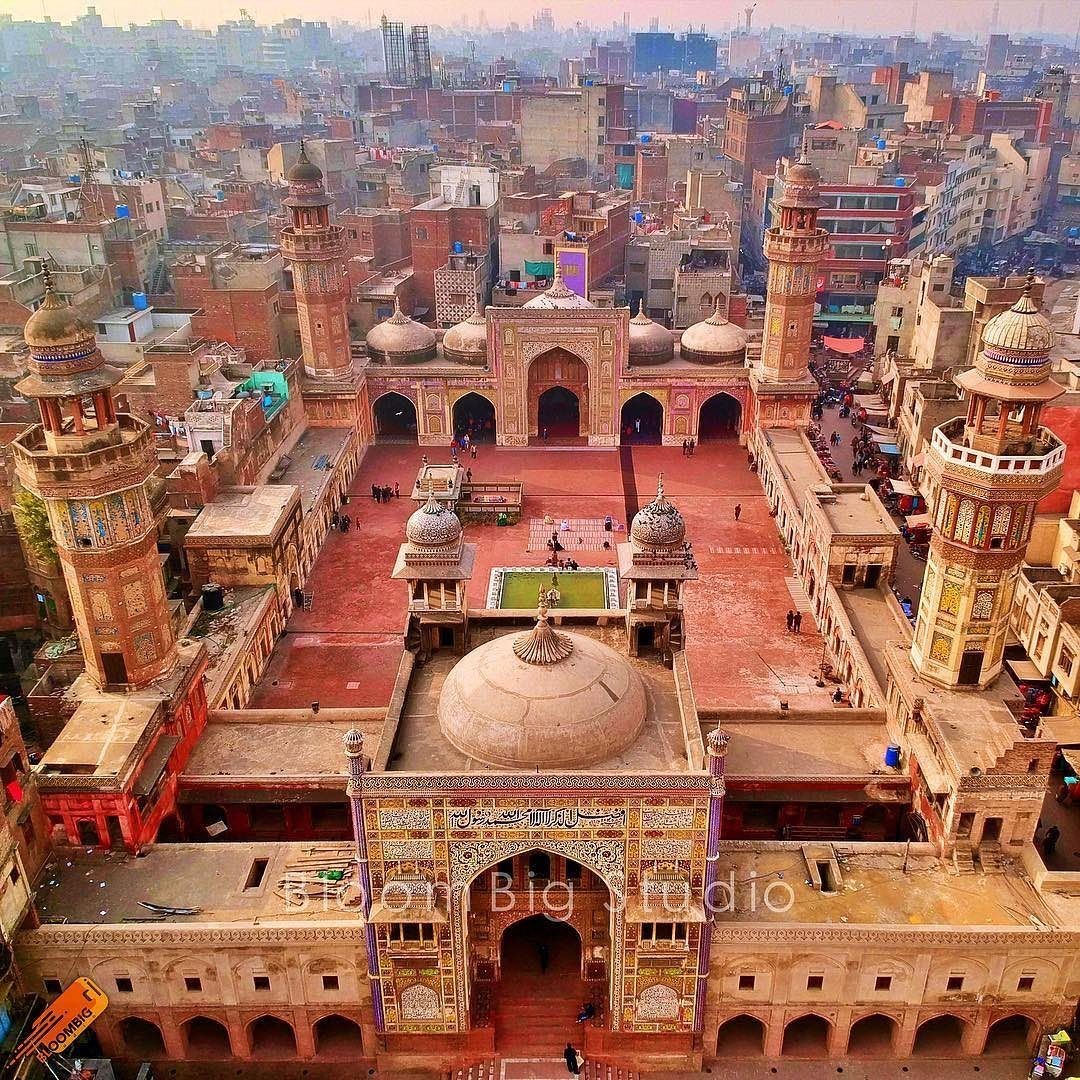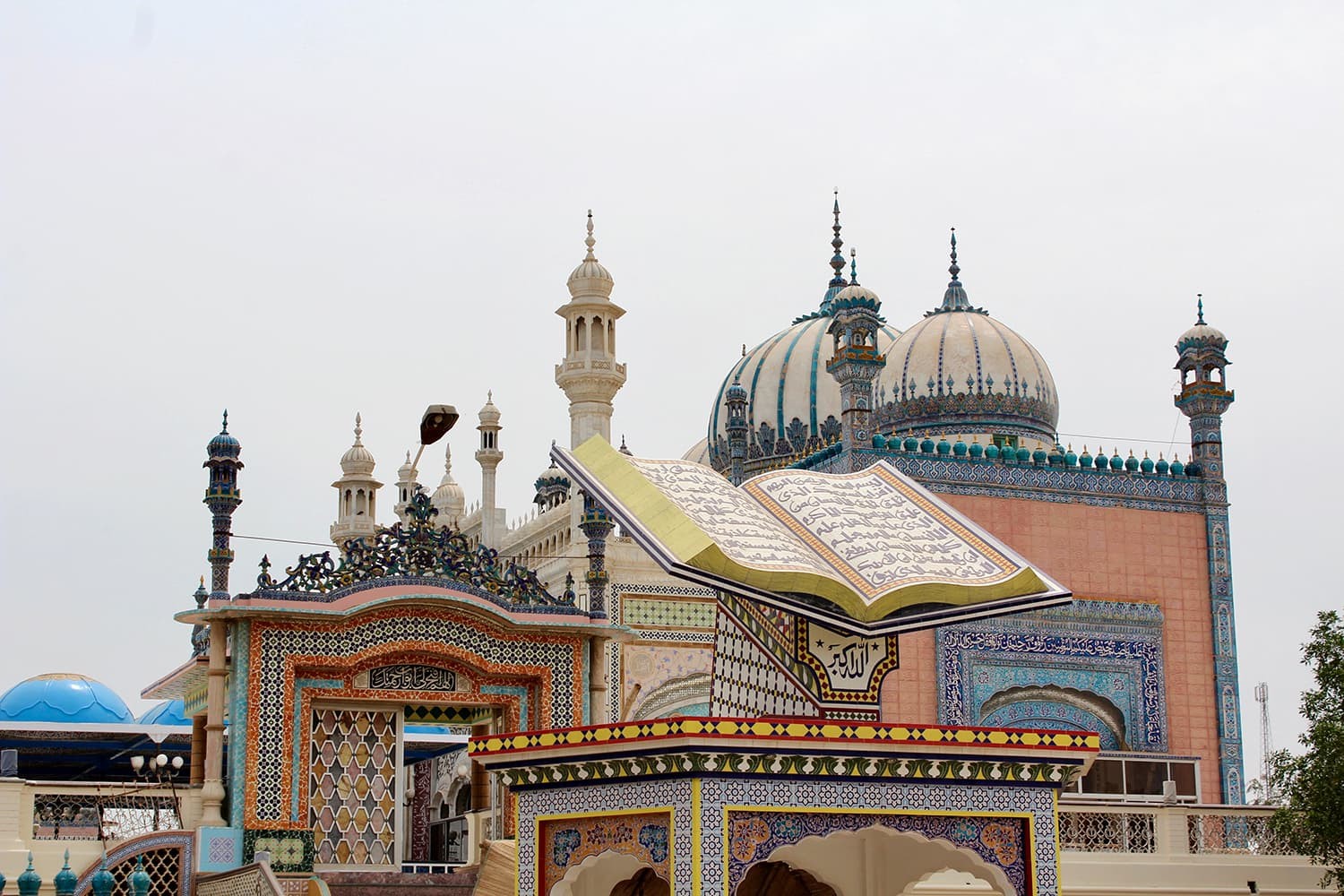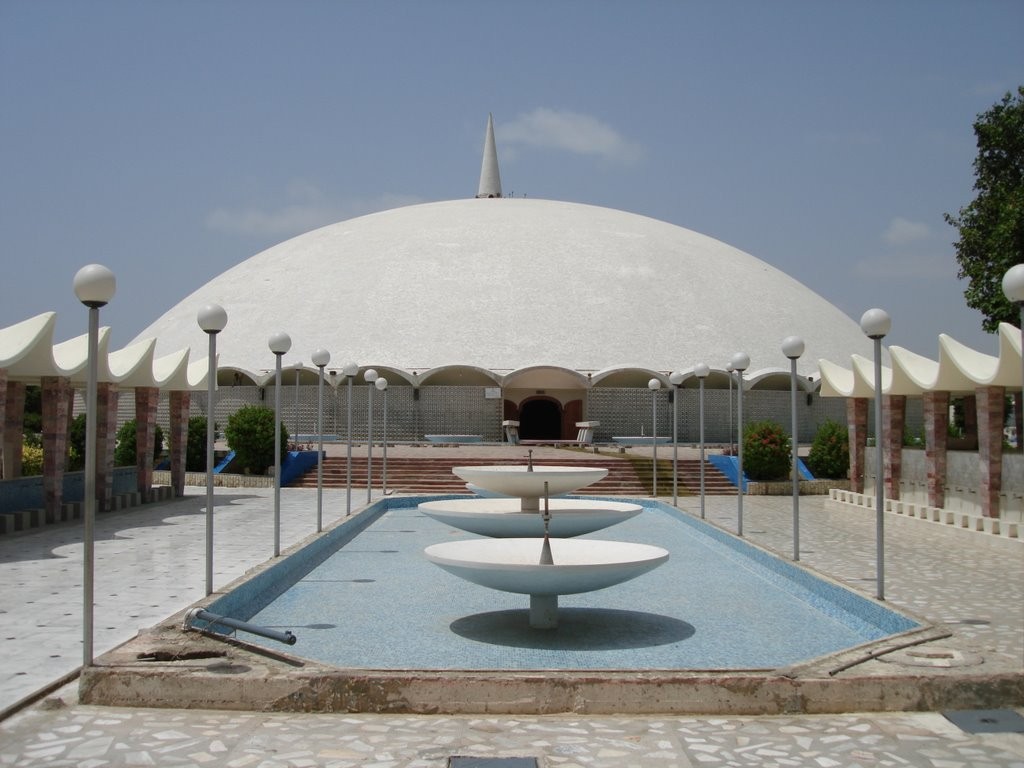Falling vaults, slim minarets, and complicated craftsmanship are only a portion of the highlights that make mosques such remarkable structures. With the spread of Islam, mosques also have developed, and with combinations in engineering styles from various societies, the impacts of globalization are apparent.
The famous Mosques everywhere throughout the world have a rich history and are integral to Islamic confidence. Even though mosques are where admirers can meet up to supplicate, they are likewise broadly refreshing for their intricate design. Well known for their structures, engineering, and history, we take a gander at a couple of the most lovely and famous Masjid in Pakistan.
Faisal Masjid:
The famous Faisal Mosque is a mosque situated in Islamabad, the Islamic Republic of Pakistan’s government national capital city. It is the fifth-biggest mosque globally and the biggest mosque in Pakistan, just as its national mosque. It is situated in the lower regions of Margalla Hills in Islamabad. The mosque includes a contemporary structure comprising eight sides of a solid shell and propelled by a Bedouin tent.
This mosque is a significant vacation destination in Pakistan, Islamabad specifically, and is alluded to as a contemporary and compelling Islamic design element. Development of the mosque was started in 1976 after a $120 million award from Saudi King Faisal, whose name the mosque bears. The unique structure by Turkish architect Vedat Dalokay was chosen after a global competition.
Without a typical dome, the mosque is formed like a Bedouin tent, encompassed by four 260 feet (79 m) tall minarets. The plan highlights eight-sided shell molded slanting rooftops framing a triangular love corridor that can hold 10,000 worshipers. The structure covers a region of 54,000 square meters. The mosque commands the scene of Islamabad, and it is arranged at the north end of Faisal Avenue, putting it at the northernmost finish in Islamabad, the foot of Margalla Hills and the westernmost lower regions of the Himalayas.
It is situated on a raised area of land against a beautiful setting of the national park. Faisal Mosque was the largest mosque globally from 1986 until 1993 when the mosques in Saudi Arabia surpassed it. Faisal Mosque is the fourth biggest mosque on the planet as far as a limit.
Badshahi Masjid:
The Badshahi Mosque is a Mughal era mosque in Lahore, capital of the Pakistani province of Punjab, Pakistan. The mosque is found in the west of Lahore Fort along the walls of the Walled City of Lahore and is generally viewed as Lahore’s most notable and famous landmark. The Badshahi Mosque was worked by Emperor Aurangzeb in 1671, with the development of the mosque for a long time until 1673. The mosque is a significant Mughal engineering model, with an outside that is brightened with cut red sandstone with marble trim.
It remains the biggest mosque of the Mughal-time and is the second-biggest mosque in Pakistan. After the Mughal Empire’s fall, the mosque was utilized as a garrison by the Sikh Empire and the British Empire and is presently one of Pakistan’s most notable sights. The mosque is found in the City of Lahore, Pakistan. The passageway to the mosque situated on the eastern side of the Hazuri Bagh. The mosque is additionally situated close to the Roshnai Gate, one of the first thirteen doors of Lahore, which is located toward the southern side of the Hazuri Bagh.
It is close to the passageway of the mosque lies the Tomb of Muhammad Iqbal, an artist broadly adored in Pakistan as the organizer of the Pakistan Movement, which prompted the production of Pakistan as the country of the Muslims of British India. It is also situated close to the mosque’s passage is the burial chamber of Sir Sikandar Hayat Khan, who is credited for assuming a significant job in protecting and rebuilding the mosque.
The famous mosque was appointed by the Mughal Emperor Aurangzeb in 1671, with development managed by the Emperor’s encouraging sibling. Governor of Lahore, Muzaffar Hussein, was also known by the name Fidai Khan Koka. Aurangzeb had the mosque worked to remember his military crusades against the Maratha king Chhatrapati Shivaji. After just two years of development, the mosque was opened in 1673.
Shah Jahan Masjid:
The Shah Jahan Mosque, also called the Jamia Masjid of Thatta, is a seventeenth-century assembly that fills in as the central mosque for Thatta’s city in Sindh. The mosque is considered to have the most detailed showcase of tile work in South Asia and is likewise remarkable for its geometric blockwork. This beautiful component is uncommon for Mughal-period mosques.
It was worked during the rule of famous Mughal emperor Shah Jahan, who offered it to the city as a badge of gratitude, and is intensely affected by Central Asian architecture – an impression of Shah Jahan’s battles near Samarkand shortly before the mosque was planned. The mosque is situated in eastern Thatta -the capital of Sindh in the sixteenth and seventeenth hundreds of years before Sindh’s capital was moved to nearby Hyderabad. It is located close to the Makli Necropolis, a UNESCO World Heritage Site. The site is roughly 100 kilometers from Karachi.
The Shah Jahan Mosque’s design style is affected by Turkic and Persian styles.] The mosque is described by broad brickwork and the utilization of blue tiles, the two of which were straightforwardly impacted by Timurid architectural styles from Central Asia from where the past leaders of Sindh, the Tarkhans, had hailed before the Mughals added the locale in 1592.
Read Also: Top 14 Best And Famous Places To Visit In Karachi, Pakistan
Wazir Khan Masjid:
The Wazir Khan Mosque is a seventeenth-century mosque situated in Lahore, capital of the Pakistani province of Punjab. The mosque was authorized during the Mughal Emperor Shah Jahan rule as part of an outfit of structures that likewise incorporated the nearby Shahi Hammam baths. The development of the Wazir Khan Mosque started in 1634 C.E and was finished in 1641. It is on the UNESCO World Heritage Tentative List.
It is viewed as the most richly finished Mughal-period mosque. The mosque is famous for its intricate faience tile work known as Kashi-Kari, just as its inside surfaces that are, for the most part, adorned with expanding Mughal-era frescoes. The mosque has been under extensive rebuilding since 2009, under the bearing of the Aga Khan Trust for Culture and the Government of Punjab, with commitments from the legislatures of Germany, Norway, and the United States. The mosque is situated in the Walled City of Lahore along the southern side of Lahore’s Shahi Guzargah, or “Illustrious Road,” which was the current course crossed by Mughal aristocrats on their approach to regal living arrangements at the Lahore Fort.
The famous mosque is arranged roughly 260 meters west of the Delhi Gate, where the mosque’s Shahi Hammam is located. The mosque additionally faces a town square known as Wazir Khan Chowk and the Chitta Gate. The mosque is based on an elevated plinth, with the primary gateway opening onto the Wazir Khan Chowk. The external border of the Wazir Khan Mosque estimates 279 feet (85 m) by 159 feet (48 m), with the long hub corresponding to the Shahi Guzargah. It was worked with blocks laid in kankar lime.
Moti Masjid:
Moti Masjid (“Pearl Mosque”) is a seventeenth-century religious building located inside the Lahore Fort, Lahore, Punjab, Pakistan. It is a small, white marble structure constructed by Mughal emperor Jahangir and changed by the draftsmen of Shah Jahan. Among his noticeable expansions (such as Sheesh Mahal and Naulakha structure) to the Lahore Fort Complex.
The mosque is located on the western side of Lahore Fort. The building is located in the northwestern corner of the Diwan-e-Aam quadrangle, which is typical of the Mughal architecture of Shah Jahan’s times. It is made of white marble that was brought from Makrana. The facade is made out of cusped arches and engaged baluster columns with smooth and delicate contours.
The famous mosque has three superimposed vaults, two passageways of five coves, and a somewhat raised central pishtaq, or portal with a rectangular frame. This five-arched facade distinguishes it from different mosques of the comparable class with three-curved exteriors. The inside is straightforward and understandable except for roofs enriched and planned in four distinct requests, two arcades, and two trabeated.
Grand Jamia Masjid:
Grand Jamia Mosque Lahore is a mosque located in Bahria Town, Lahore, Pakistan. With a limit of 70,000 admirers, it is the third biggest mosque in Pakistan and the world’s fourteenth biggest mosque. Planned by Nayyar Ali Dada, it was introduced on Eid AL-Adha on 6 October 2014. It can oblige 25,000 admirers inside, while the patio and hallway prompting the principal lobbies of love can oblige a sum of 70,000.
The engineering is affected by Badshahi Masjid, Wazir Khan Mosque, and Sheikh Zayed Mosque, with development expenses of more than 4 billion rupees (or roughly $39 million). The structure includes four minarets, each 165 ft tall, and a vast vault encircled by 20 littler arches. The outside is surfaced with 4 million carefully assembled Multani tiles. The inside is embellished with handcrafted rugs imported from Turkey and more than 50 crystal fixtures imported from Iran.
One of the floors comprises an Islamic legacy exhibition hall showing different Quranic assortments, an Islamic library, and an Islamic craft display with various antique artifacts. Over four million Multan. Handcrafted mosaic tiles spread the surface zone of the mosque. The whole structure’s base is raised 20 feet over the ground, with the housetop hoisting to 80 feet and the Stupendous Vault put in the middle encompassed by 20 littler arches.
Denoting the furthest points of the whole structure are the transcending minarets standing 165 feet tall. The mosque incorporates 6 curved shape wooden entryways and afterward stuns you with perspectives on white light fixtures, tile-mosaic, and frescos of uncommon magnificence. The Middle Arch is the crown gem of this heavenly bit of craftsmanship. Rising 40 ft. in tallness and spreading 50 ft.
Read Also: Top 15 Best And Famous Art Galleries In Pakistan
Bhong Masjid:
The famous Bhong Mosque is situated in Bhong, Rahim Yar Khan District, Punjab Province, Pakistan. It was structured and built over 50 years (1932–1982) and won the Aga Khan Grant for Architecture in 1986. The mosque development was leveled out of Ace Abdul Hameed (Kamboh), who attempted to ensure it was impeccable and a milestone for Pakistan. A postage stamp portraying it was given on May 12, 2004, in Pakistan.
Mahabat Khan Masjid:
The Mahabat Khan Mosque here and there spelled Mohabbat Khan Mosque, is a seventeenth-century Mughal-period mosque in Peshawar, Pakistan. The mosque was founded in 1630, and named after the Mughal representative of Peshawar, Nawab Mahabat Khan container Ali Mardan Khan, known then again as Mahabat Khan and Ali Mardan Khan. The mosque’s white marble facade is viewed as one of Peshawar’s most famous sights. The mosque was worked somewhere in the range of 1660 and 1670 on what was the most noteworthy point in the old city.
The minarets of the Mohabbat Khan Mosque were regularly utilized in Sikh times for hanging detainees. Five individuals for each day were dangled from the towers, as a substitute for the gallows’. Following the Soviet attack on Afghanistan, displaced persons inborn seniors would gather in the mosque to manufacture solidarity among Afghans against the Soviets. The size of the mosque is 30,155 square feet. Its open patio has a midway found in the bathing pool and a separate column of rooms covering the outside dividers.
Masjid-e-Tooba:
Masjid e Tooba or Tooba Mosque, likewise famous as Gol Masjid, is situated in Karachi, Sindh, the area of Pakistan. It is arranged in stage 2 of DHA (Resistance Lodging Authority), Karachi. The development of the mosque started in 1966 and finished in 1969. Pakistani draftsman Babar Hamid Chauhan structured the mosque, and the specialist was Zaheer Haider Naqvi.
This mosque can hold up to 5,000 individuals. Cases to be the biggest single-arch mosque on the planet without any columns in its focal supplication corridor. Its large arch is upheld on a low encompassing wall. It is the eighteenth biggest mosque on the earth, starting in 2018.
